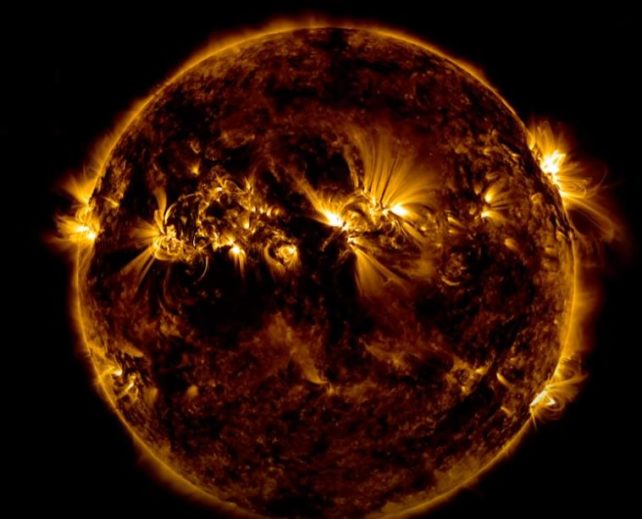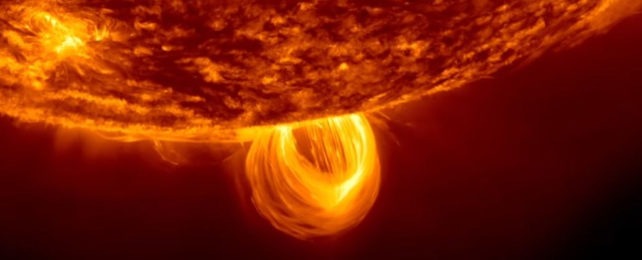NASA's Goddard Space Flight Center has released an hour-long time-lapse video that shows 133 days of the Sun's life.
The video shows the Sun's chaotic surface, where great loops of plasma arch above the star along magnetic field lines. Sometimes the looping plasma reconnects to the star, and other times it's ejected into space, creating hazardous space weather.
The images are from the Solar Dynamics Observatory (SDO,) a spacecraft launched in 2010 as part of NASA's Living With a Star (LWS) program. Its primary mission lasted five years, but NASA says the SDO should remain operational until 2030.

The images in the movie were captured 108 seconds apart in the extreme ultraviolet wavelength with the SDO's Extreme Ultraviolet Variability Experiment (EVE). The SDO is in a geosynchronous orbit 22,000 kilometers (13,670 miles) above Earth, and the Sun revolves every 27 days, creating an ever-changing view of the star's surface.
As it watches, the SDO measures the Sun's interior, magnetic field, and hot plasma in the solar corona. It also measures the irradiance that creates the ionospheres of Earth and other planets.
Each day, the SDO captures approximately 70,000 images totaling up to 1.5 terabytes of data. That's an extraordinary amount of data, and a 2017 paper in Nature that compiled all that data into a single repository described it as "… one of the richest and biggest repositories of solar image data available to mankind."

Most astronomy is concerned with distant stars in other solar systems throughout the Milky Way. It's easy to forget that we live next door to a powerful star fusing hydrogen into helium long before any life appeared on Earth and will outlast all life on Earth.
A lot is happening in the Sun, and its activity affects Earth and everything that lives on it. The Sun provides a steady source of reliable energy but also has a troubling, almost malevolent-appearing aspect.
NASA's LWS program aims to understand the Sun better, partly so we can understand and predict powerful space weather that can damage satellites, power grids, and other infrastructure. The SDO plays a vital role in the effort.
A white paper explaining the mission said, "SDO will determine how the Sun's magnetic field is generated, structured, and converted into violent solar events that cause space weather."

The spacecraft has been very successful. In 2020, NASA made a video to celebrate the observatory's 10th anniversary. It highlighted ten important observations and discoveries. SDO has watched massive flares erupt, found a new type of wave, observed planets as they transited in front of the Sun, and watched the star tear apart a comet that got too close.
The SDO isn't alone in studying the Sun. The ESA's SOHO (Solar and Heliospheric Observatory) has been studying the Sun since its launch in 1995.
In 2018 NASA launched the Parker Solar Probe, which became the closest ever human-made object to the Sun. In 2020, the ESA launched their Solar Orbiter, which will take the closest-ever images of the Sun and study the star's polar regions.
The Sun is a scientifically-interesting object, but it's also visually stunning and something everyone can relate to. As our civilization's nascent space economy grows, we'll have more satellites and other infrastructure – maybe on the Moon's surface – that will be vulnerable to violent space weather. Solar observatories like the SDO allow us to forecast space weather and, eventually, prepare for it.
Most of us have no role to play in that, but we can still enjoy the movies.
This article was originally published by Universe Today. Read the original article.
